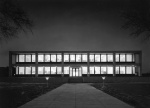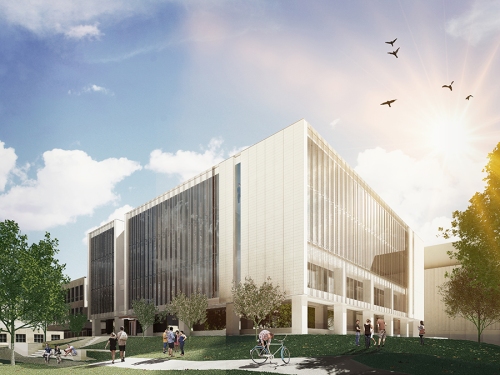
facilities.uchicago.edu
The Laboratory for Astrophysics and Space Research (LASR) is being “renovated and expanded” but a more accurate way of describing the project is that the building will be altered almost beyond recognition.
The new Perkins Eastman building that work will soon start on will serve as the home of the Enrico Fermi Institute (which recently moved out of LASR into the Eckhardt Center) and the Kadanoff Center for Theoretical Physics.
The renderings actually show a pretty tasteful new building–but it is clearly a new building.The original building was apparently designed to support additional floors, but the real problems here the cantilevered addition and the obscuring of the original second floor, not the added height. While it looks like there might be limestone masonry, the design departs dramatically from the simple modernist design of the current building. It is admittedly better from a preservation perspective than tearing down the building would have been.
Obviously, the University knows best about its needs and it’s believable that the University has outgrown the low-rise science buildings from the 1950s and 60s–LASR, High Energy Physics, and the Accelerator Building. However, I would argue that there is a preservation argument for saving these buildings. Architecture that now seems old but not old *enough* to be worth preserving may, in less than fifty years time, be considered in a similar light to how we view the prewar buildings on campus now.
LASR is a beautiful 1965 symmetrical building by Skidmore Owings & Merrill, but I can live with the changes being made to it. But what about its neighbors, High Energy Physics and the Accelerator Building? (See below). Like LASR, the High Energy Physics building reflects its (then) high-tech nature with striking architecture. It has very interesting windows and is structured as a limestone block placed a smaller glass cube. And like LASR, it is a nicely scaled structure that adds needed limestone and campus feel to a small city of glass towers. The Accelerator Building is a much less likable building but it performs a similar function, in spite of a 1991 addition to the second floor that made the building uglier than it originally was. It also is an important marker in the architectural history on campus as one of only three standing postwar pre-1960 buildings built in a modern style (the other two are the 1949 Administration Building and the 1954 1155 E. 60th Street building; some other buildings completed in this period on the hospital campus continued in the neo-Gothic style). And it has aged well and is covered in ivy, something that would be unimaginable on a 21st century science building.
- Jack Mitchell/The Campus Review
- Jack Mitchell/The Campus Review
- photoarchive.lib.uchicago.edu
- photoarchive.lib.uchicago.edu
- photoarchive.lib.uchicago.edu
An old memo and an old master plan indicates the University’s plans to raze Accelerator and High Energy Physics for the Eckhardt Center, which obviously did not happen. But they are probably next up on the sciences list after the LASR project.
Accelerator Building (Schmidt, Garden & Erikson, 1951)–note the second-floor addition:
High Energy Physics building (Hausner & Macsai, 1967):
The Facilities department surveyed both buildings in 201. Interestingly, the survey lists the date of Accelerator as 1949, not 1951–I am not sure which is correct. These surveys (HEP here, Accelerator here) are interesting reads and objective enough but in the case of the Accelerator Building the survey unfortunately provides justification for a demolition or significant alteration (a la LASR):
“The historic integrity of the original design has been compromised by later modifications such as original window openings having been filled in with masonry; aluminum-framed glazed entrance vestibules that have been added on the west facade; and the addition of louvers and other mechanical devices at windows and other masonry openings.”
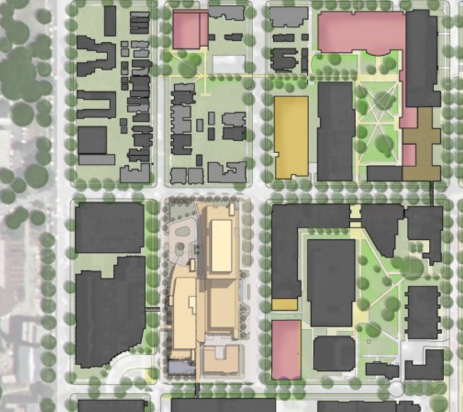
Most alarming of all is the indication on the old master plan (see above) that the Kovler Viral Oncology Labs is a potential development site. This jewel-box 1977 building by the late Jack Durkee Train (a founder of the firm Valerio Dewalt Train Associates–who designed Lab School’s Earl Shapiro Hall and Gordon Parks Arts Hall) is unlike any other campus building but its limestone facade and sunken windows borrow from the campus Gothic. The way it plays with light and shadow recalls some of the best of 1970s architecture, such as Marcel Breuer’s Whitney Museum. And while it may no longer be a useful laboratory, it could be repurposed as a medical library, for example. We shouldn’t pay too much attention to old master plans, of course, especially since the one above has been departed from several times already (it didn’t plan for a new hospital, demolishing Pierce, etc.).
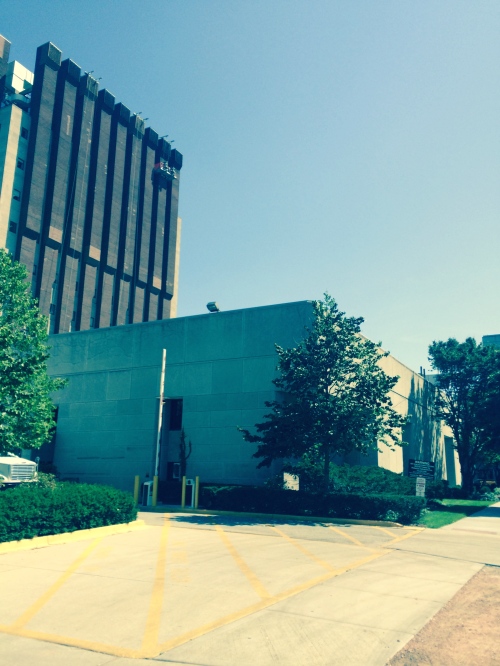
Jack Mitchell/The Campus Review
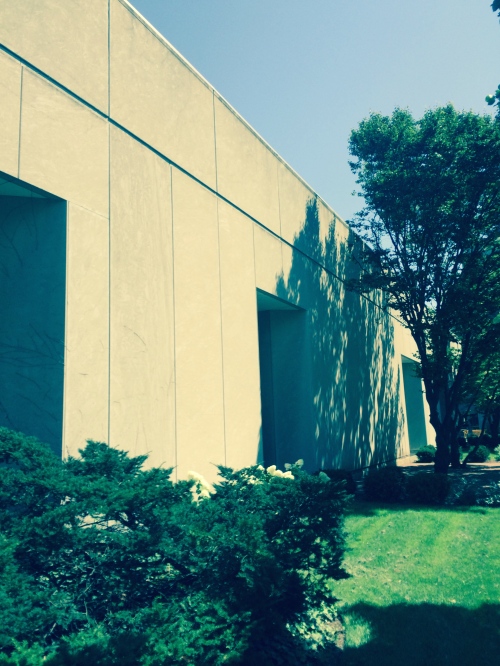
Jack Mitchell/The Campus Review








